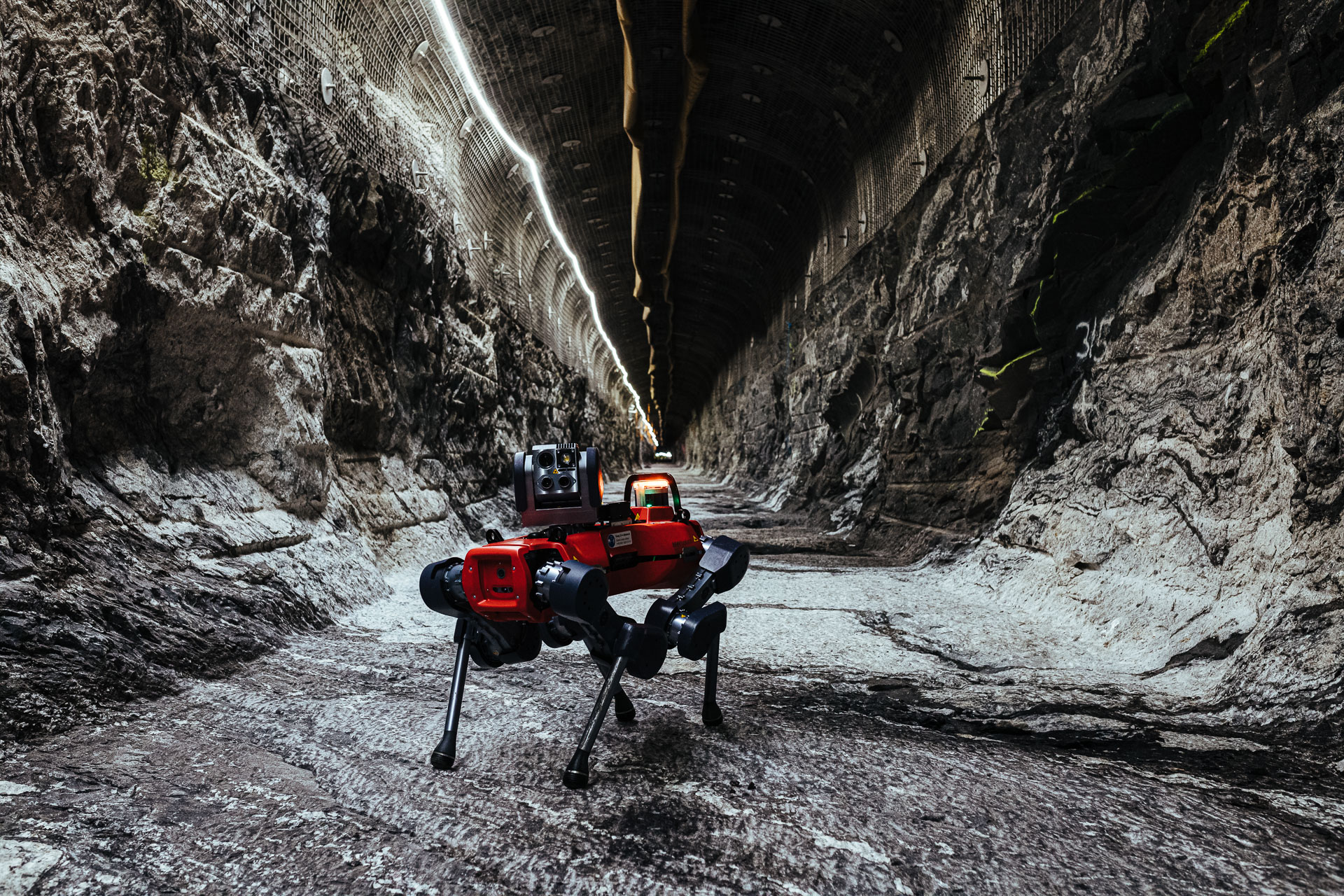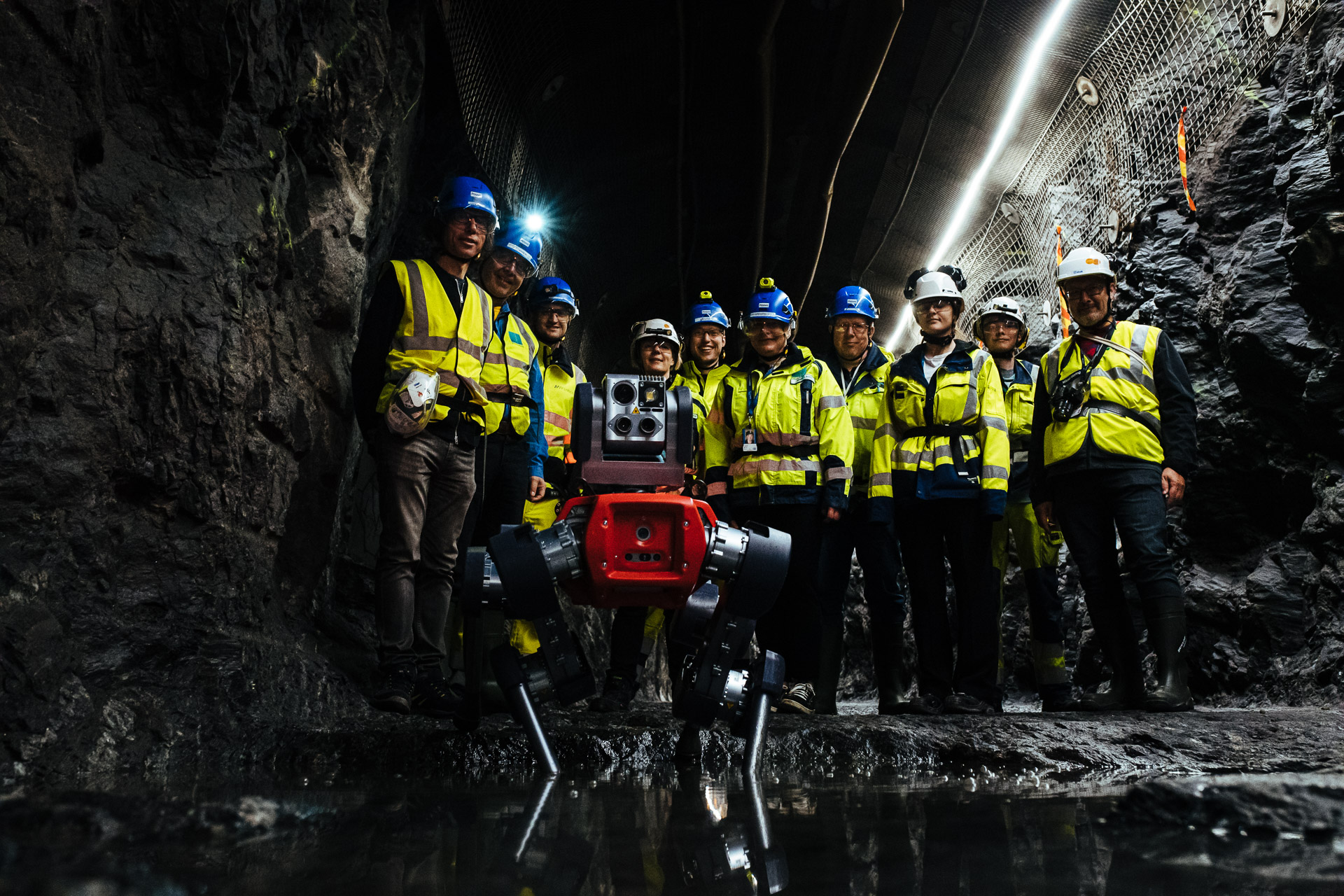ONKALO® provided new type of test setting for quadrupedal robot
Over the years, a huge number of products of ingenious engineering have made an appearance in ONKALO, the very core of final disposal at a depth of more than 400 metres, but the "robot dog" that arrived there in June this year was the first of its kind. A team of scientists lead by the Swiss company ANYbotics visited Olkiluoto in the early summer to test the performance of their four-legged ANYmal robot in the underground facilities.

The development efforts on the ANYmal robot have been ongoing for quite some time already. The roots of ANYbotics lead back to the Swiss Federal Institute of Technology, ETH. A team of scientists from the Institute built the first quadrupedal robot already in 2009 and ANYbotics was founded for the commercialisation of this technology in 2016.
New environment
The English name ANYmal of the robot does not specify the species, but a dog is probably at least a valid option. If such information is necessary, that is. And to make the naming of the species even more confusing, the robot used in the Olkiluoto test was called Donkey. This can be seen to describe the robot on some level: it followed stubbornly its path, not letting the people scurrying about around it distract it from its mission.
The robot uses laser sensors and cameras to perceive its environment and is capable of highly accurate localisation. By combining the observation data with location data (such as a map or area scanning data), it has the ability to plan its navigation path independently, if needed.
Having previously practised traversing and climbing on mountains, the Swiss robot entered a new environment in the underground tunnels. ANYmal is designed for autonomous operation in challenging environments. The setting provided by ONKALO for testing the robot's performance was unique: although there are tunnels also elsewhere in the world, it is the only constructed underground final disposal facility.
Performance of test dictated by battery run time
The four-legged visitor from the Alpine country roamed the tunnels in ONKALO for about 1.5 hours, as the battery run time of the current version is just under two hours. Thus, the performance of the test was dictated by the battery run time. The intention was to experiment the distances the robot is able to travel in ONKALO conditions on one charge and to find out if there are any terrain forms in the tunnel system which it cannot traverse. For the test, the robot first "walked" the planned path under remote control and scanned a map in its internal system for itself. In the actual test, the robot then navigated the scanned path autonomously, albeit with visual contact to the research team the whole time. The possibility to regain remote control of the robot at any time, e.g., in case of an emergency, was also maintained. Various safety functions were programmed in the robot. For example, it circumvented obstacles on its path at a certain safety distance and stopped if anything entered its safety area.

Multitude of possibilities
The event was organized by the European Commission Directorate General for Energy and the Joint Research Centre together with Posiva. The utilisation of robots is of interest to authorities, e.g., due to their ability to access places that are inaccessible to humans in order to carry out inspections related to nuclear safeguards, for instance. Examples of such places that are dangerous to people could include areas of high radiation or toxicity. Working hour limitations do not apply to robots either; they can be programmed to carry out the inspection work at a suitable time, such as during quieter night-time hours.
The use of robots for nuclear safeguards purposes is of interest also to Posiva for the aforementioned reason. A robot would be always ready and available for use at a shorter notice, compared to having to call an inspector physically to the site.
Other applications seen for robots include rescue operations and industry. Robots can feature different equipment for different tasks, including optical and thermal cameras, microphones, and gas or radiation detectors. The weight of the Swiss robot is about 50 kilograms.
See the robot in ONKALO in this videoOpen link in a new tab.
Technical details:
• length 930 mm
• width 530 mm
• height 890 mm (470 mm lying down)
• weight 50 kg
• IP67, full protection against moisture and dust
• Li-ion battery 932.4 Wh
• recharge time 3 h, rapid charge 100 min (70%)
• walking speed 1.3 m/s
• able to cross a 300 mm wide gap
• able to climb a max. ±30° slope
• can be equipped with a zoom camera, thermal camera, microphone and spotlight (max. 1895 lm)
• requires no light for autonomous operation
Text: Ville Kulmala
Images and video: Tapani Karjanlahti
Share